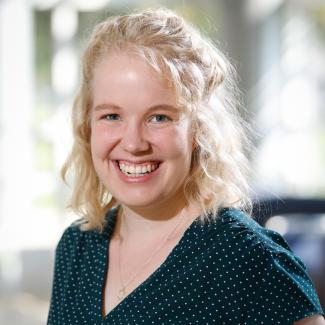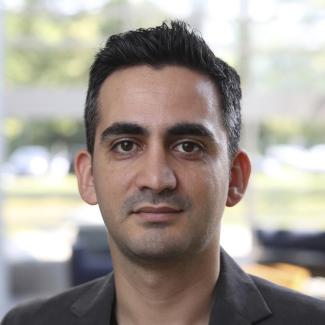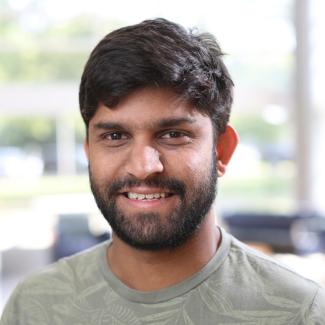
Carbon Electronics Designing and developing low-cost, reliable organic electronics.
Organic LEDs
Organic light-emitting diodes (LEDs) are found in many commercial applications – from television screens to mobile phones. UK CAER researchers are not only working to improve those technologies but they are interested in next-generation LED systems, including solid-state lighting applications.
Organic Solar Cells
Utilizing ink-jet printing techniques to develop carbon-based solar cells has been a focus of the Anthony Lab at UK CAER for two decades. Organic solar cells are more flexible than inorganic materials and can be produced using simpler technologies at a much lower cost.
Organic Transistors
Organic thin-film transistors show great promise in a number of commercial applications, including flexible, light-panel displays and even smart clothing. UK CAER’s organic electronics team is working to develop this next-generation of materials.
Computational Chemistry
Computational chemists are throwing a modern curve at traditional science. Utilizing supercomputers to better predict outcomes, characterize new compounds, and help researchers sort through big data, UK CAER’s computational chemistry researchers are helping colleagues solve problems faster and with more precision.
Active Projects
Developing Organic Solar Cells and Transistors
John Anthony, the John C. Hubbard Professor of Chemistry, is a pioneer in organic materials—things that are made from carbon instead of silicon. With grants from the U.S. Navy, NSF, King Abdullah University of Science and Technology, as well a number of industrial sponsors, Anthony’s research focuses on organic solar cells (for low-cost generation of electricity), organic thin-film transistors (for flexible flat-panel displays), and organic light-emitting diodes (for high-efficiency lighting). “Carbon is a lot more versatile than silicon. Silicon is a rock. You are very limited in how you can shape it. Plastics are carbon, whether you’re talking saran wrap or a Kevlar, bulletproof vest. You have a lot more choices in shape.” Carbon is also cheaper because it takes less energy to produce materials.
“We’re working on bulk hetero-junction organic photovoltaics. Those big words describe a process that’s ridiculously simple. You take a sheet of plastic, you slather on our organic ink solution, and as the solvent evaporates, the materials just spontaneously organize into a working solar cell. You put a set of electrodes on top and you can convert sunlight into electricity.” Anthony’s research team is also exploring passing a transparent sheet of plastic through an ink-jet printer, loaded with his proprietary ink, to make lightweight, flexible solar cells. This discovery might revive the print industry. Full-color, high-resolution printing plants could convert to solar cell production, once Anthony’s team identifies the ideal, low-cost material set.
Creating New Materials Using Computational Chemistry
For many, the idea of a chemist conjures images of someone working behind a bench in a white lab coat, mixing chemicals together in beakers. For CAER researcher Chad Risko, his chemistry takes place on a computer. Risko’s team blends quantum mechanics, classical mechanics, chemistry, material science and engineering to provide a fundamental understanding of new synthetic materials that are of interest for electronics applications, for energy conversion and energy storage. In particular, Risko’s team studies the chemistry of batteries, from small lithium ion batteries to large grid-scale storage. Risko helps his colleagues from across disciplines design new materials that they may then use in their own labs. By starting at the atomic level, Risko and his team use computer simulations to examine the different possibilities of a material. They are then able to share this information with their colleagues and make recommendations to them.
















